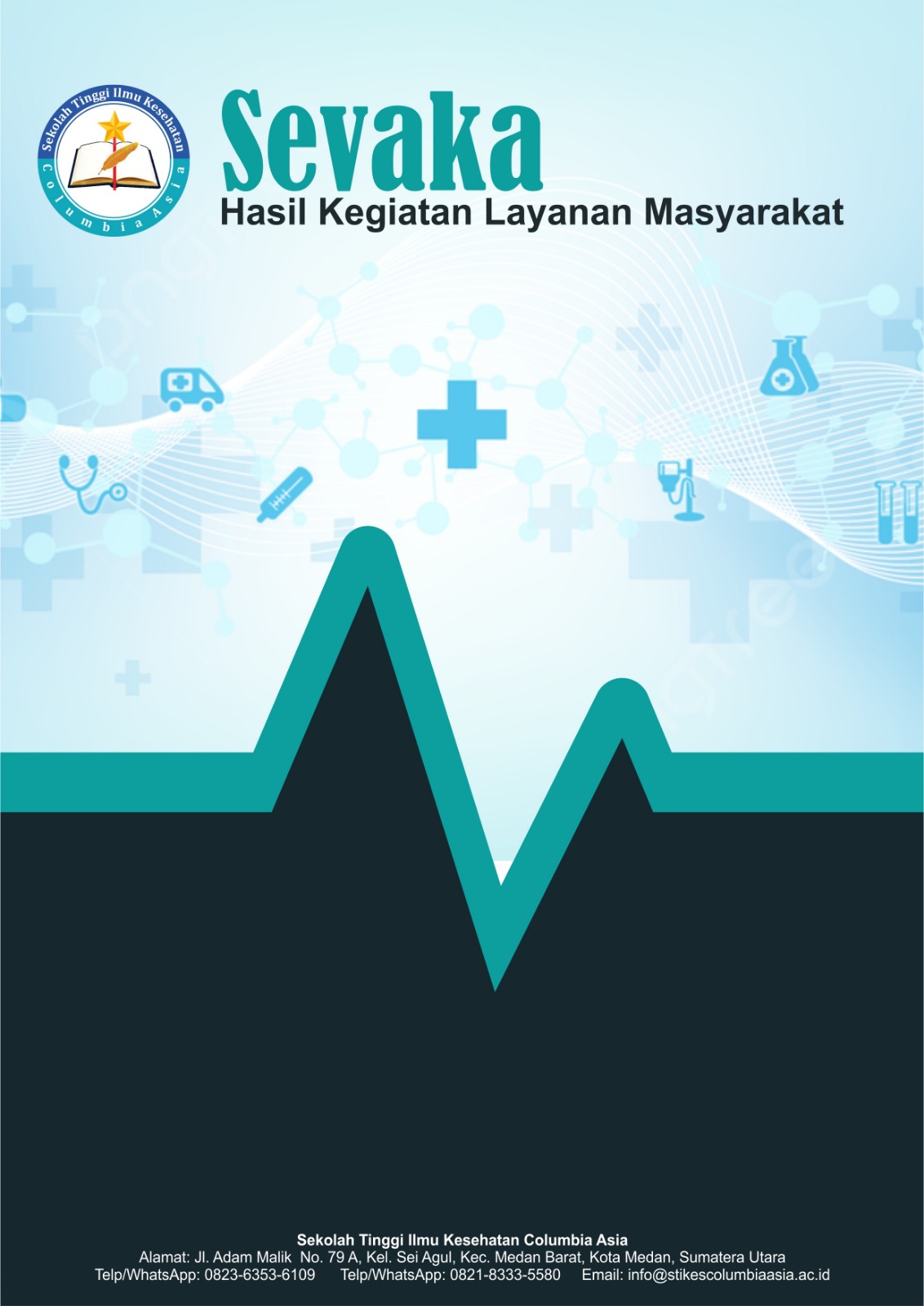Pertolongan Pertama Gigitan Binatang Rabies dan Edukasi Perawatan Luka Akibat Gigitan Binatang di Wilayah Kerja Puskesmas Medan Tuntungan, Kota Medan Tahun 2024
DOI:
https://doi.org/10.62027/sevaka.v3i2.390Keywords:
Wound care, Anti-rabies serum (SAR), Anti-rabies vaccine (VAR)Abstract
Rabies is an acute infectious disease of the central nervous system caused by the rabies virus and belongs to the zoonotic group, which is a disease that can be transmitted from animals to humans through bites or exposure from Rabies Transmitting Animals (HPR) such as dogs, monkeys, ferrets, cats, and wild animals that have been infected. In the prevention of rabies after exposure (Post Exposure Prophylaxis/PEP), there are three important elements, namely wound care, anti-rabies serum (SAR), and anti-rabies vaccine (VAR). This community service activity is carried out through approaches, preparation, and implementation with the aim of increasing the understanding of high school students about first aid and wound care due to the bite of an animal infected with rabies. The targets to be achieved in this activity include providing comprehensive health education about rabies, health risks for sufferers, rabies prevention, and how to treat wounds caused by rabies bites. With this education, it is hoped that students can have a better understanding and be able to apply first aid measures and wound care appropriately.
References
Centers for Disease Control and Prevention. (2020). Rabies: Epidemiology and prevention. https://www.cdc.gov/rabies/
Departemen Kesehatan Republik Indonesia. (2012). Petunjuk perencanaan dan penatalaksanaan kasus gigitan hewan tersangka rabies di Indonesia (Vol. 2, Ed. 4). Direktorat Jenderal PPM & PL.
Fooks, A. R., Banyard, A. C., Horton, D. L., Johnson, N., McElhinney, L. M., & Jackson, A. C. (2014). Current status of rabies and prospects for elimination. The Lancet, 384(9951), 1389–1399. https://doi.org/10.1016/S0140-6736(13)62707-5
Hemachudha, T., Laothamatas, J., & Rupprecht, C. E. (2002). Human rabies: A disease of complex neuropathogenetic mechanisms and diagnostic challenges. The Lancet Neurology, 1(2), 101–109. https://doi.org/10.1016/S1474-4422(02)00041-8
Hiswani, Drh., N.Kes. (2014). Pencegahan dan pemberantasan rabies. FKM – Universitas Sumatera Utara. https://www.usu.ac/fkm_usu/e_book/pencegahan_dan_pemberantasan_rabies/@hiswani/journal_12/pdf
Jackson, A. C., & Johannsen, E. C. (2008). Rabies and other rhabdovirus infection. In Harrison’s Principles of Internal Medicine (17th ed., Vol. 1, Ed. 3). McGraw-Hill. https://internal.medical.com/e_book/rabies_and_other_rhabdovirus_infection/1/Pdf
Jawetz, E., Melnick, J. L., & Adelberg, E. A. (2009). Medical microbiology (25th ed.). McGraw-Hill.
Knobel, D. L., Cleaveland, S., Coleman, P. G., Fèvre, E. M., Meltzer, M. I., Miranda, M. E., Shaw, A., Zinsstag, J., & Meslin, F. X. (2005). Re-evaluating the burden of rabies in Africa and Asia. Bulletin of the World Health Organization, 83(5), 360–368. https://www.who.int/bulletin/volumes/83/5/360.pdf
Merlin, M. A., & Pryor, P. W. (n.d.). Rabies. Medscape. http://emedicine.med-scape.com/article/785543/follow_up/pdf
Meslin, F. X., & Briggs, D. J. (2013). Eliminating canine rabies: The role of public–private partnerships. Antiviral Research, 98(3), 314–318. https://doi.org/10.1016/j.antiviral.2013.02.013
Rupprecht, C. E., & Gibbons, R. V. (2009). Prophylaxis against rabies. The New England Journal of Medicine.
Rupprecht, C. E., Hanlon, C. A., & Hemachudha, T. (2002). Rabies re-examined. The Lancet Infectious Diseases, 2(6), 327–343. https://doi.org/10.1016/S1473-3099(02)00287-6
Susanto, C. E. (2009, October 26). Penyakit rabies makin meluas. Media Indonesia. http://www.mediaindonesia.com/read/2009/10/26/102330/71/14/Penyakit-rabies-makin-meluas
World Health Organization. (2009). Current WHO guide for rabies pre and post-exposure prophylaxis in humans. https://www.who.int/rabies/1_current_who_guide_for_rabies_pPre_and_post_exposure_prophylaxis_in_humans/pdf
Downloads
Published
How to Cite
Issue
Section
License
Copyright (c) 2025 Sevaka : Hasil Kegiatan Layanan Masyarakat

This work is licensed under a Creative Commons Attribution-ShareAlike 4.0 International License.







